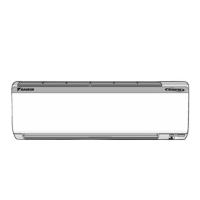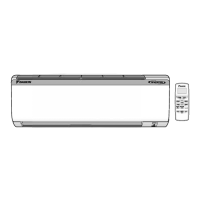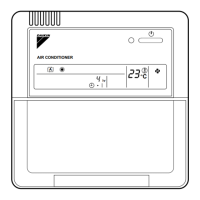Installing Building Static Pressure
Sensor Taps
If a unit has building static pressure control capability, you
must eld install and connect static pressure taps to the static
pressure sensor SPS2 in the unit. This sensor is located at the
bottom of the main control panel next to SPS1.
Carefully locate and install the two static pressure sensing
taps. Improper location or installation of the sensor taps causes
unsatisfactory operation. Below are pressure tap location and
installation recommendations for both building envelope and
lab, or “space within a space” pressure control applications.
The installation must comply with local code requirements.
CAUTION
Fragile sensor ttings. If you must remove tubing from a
pressure sensor tting, use care. Do not use excessive force
or wrench the tubing back and forth to remove or the tting
can break off and damage sensor.
Building Pressurization Applications
1. Install a tee tting with a leak-tight removable cap in each
tube near the sensor tting. This facilitates connecting a
manometer or pressure gauge if testing is required.
2. Locate the building pressure (high) tap in the area that
requires the closest control. Typically, this is a ground
level oor that has doors to the outside.
3. Locate the building tap so it is not inuenced by any
source of moving air (velocity pressure). These sources
may include air diffusers or outside doors.
4. Route the building tap tube through the curb and feed
it into the unit through the knockout in the bottom of the
control panel (refer to Figure 14). Connect the 3/16" ID
tube to the (high) tting for sensor SPS2.
5. Locate the reference pressure (low) tap on the roof.
Keep it away from the condenser fans, walls, or anything
else that may cause air turbulence. Mount it high
enough above the roof so it is not affected by snow. Not
connecting the reference tap to the sensor results in
unsatisfactory operation.
6. Use an outdoor static pressure tip (Dwyer A306 or
equivalent) to minimize the adverse effects of wind.
Place some type of screen over the sensor to keep out
insects. Loosely packed cotton works well.
7. Route the outdoor tap tube out of the main control panel
through a small eld-cut opening in the upright. Seal the
penetration to prevent water from entering. Connect the
3/16" ID tube to the (low) tting for sensor SPS2.
Figure 16: Outdoor Static Pressure Tubing Installation
Lab Pressurization Applications
1. Install a “T” tting with a leak-tight removable cap in each
tube near the sensor tting. This facilitates connecting a
manometer or pressure gauge if testing is required.
2. Use different colored tubing for the controlled space
pressure (high) and reference pressure (low) taps, or tag
the tubes.
3. Regardless whether the controlled space is positive or
negative with respect to its reference, locate the high
pressure tap in the controlled space (the setpoint can be
set between -0.2" and 0.2" wc).
4. Locate the reference pressure (low) tap in the area
surrounding the controlled space. Not locating the
reference tap to the sensor results in unsatisfactory
operation.
5. Locate both taps so they are not inuenced by any
source of moving air (velocity pressure). These sources
may include air diffusers or doors between the high and
low pressure areas.
6. Route the building tap tube between the curb and the
supply duct and feed it into the unit through the knockout
in the bottom of the control panel.
7. Connect the tube to the (high) tting for sensor SPS2.
IM 1058-8 • MAVERICK II ROOFTOP SYSTEMS 18 www.DaikinApplied.com
meChanICal InsTallaTIon

